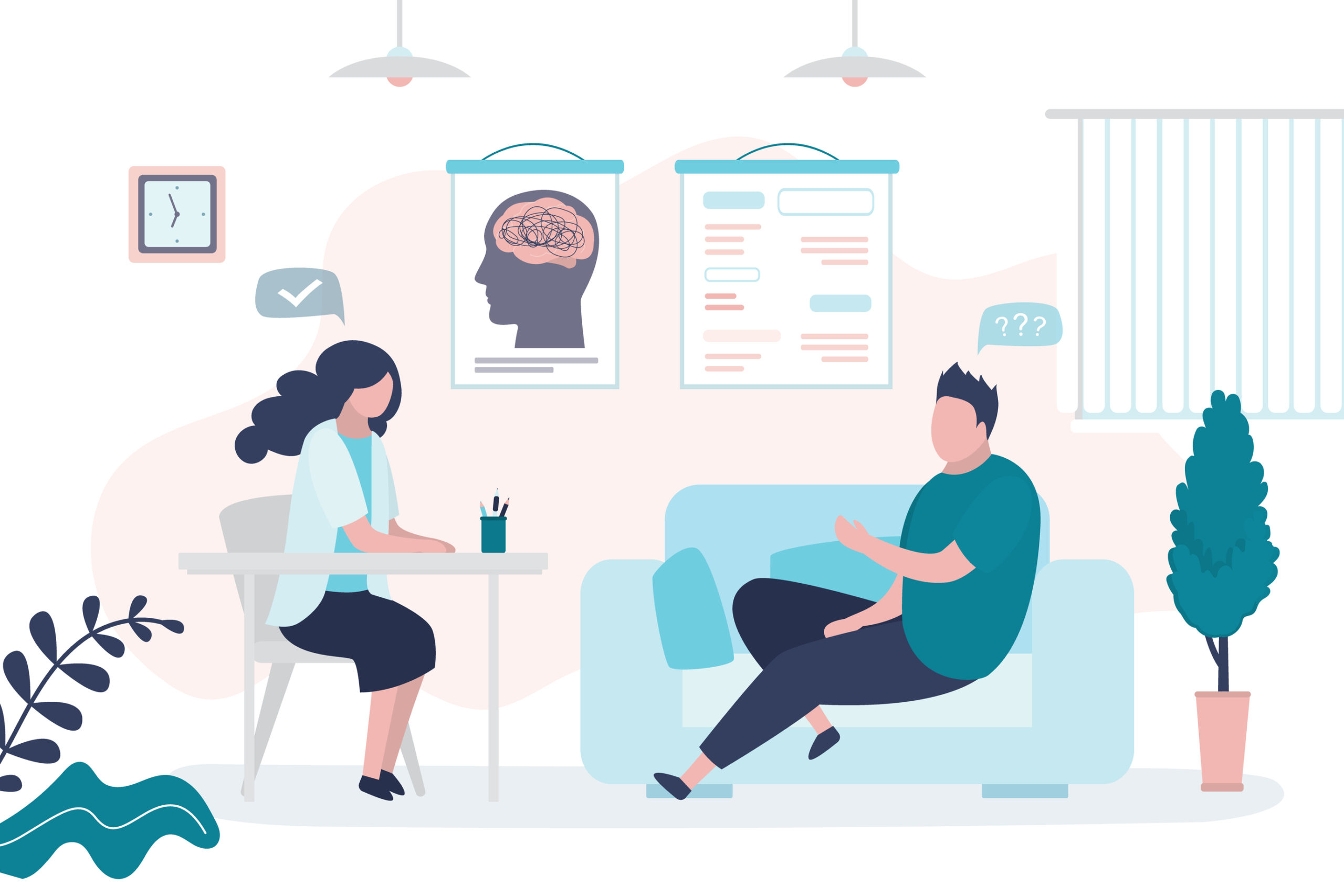Psych Therapy: A Comprehensive Guide to Results and techniques
:max_bytes(150000):strip_icc()/counseling-at-home-1141304093-55910fb2ea804aaa88b4951669d38957.jpg)
Cognitive-Behavioral Therapy
Cognitive-Behavioral Treatment (CBT) is a commonly used psychotherapeutic strategy that concentrates on determining and customizing dysfunctional reasoning and habits patterns. Created in the 1960s by Aaron T. Beck, CBT combines behavior and cognitive concepts to attend to numerous mental health and wellness concerns, including anxiety, stress and anxiety, and stress-related conditions. The facility of CBT is that maladaptive ideas add to emotional distress and maladaptive behaviors. By restructuring these thoughts, individuals can accomplish considerable enhancements in their psychological health and daily performance.
CBT is identified by its structured, ambitious nature. Therapy commonly includes a collective procedure in between the specialist and customer, where details problems are identified, and useful methods are developed to resolve them. Methods such as cognitive restructuring, exposure therapy, and skill-building workouts are commonly employed. Cognitive restructuring involves challenging and modifying adverse idea patterns, while direct exposure treatment intends to minimize concern and anxiousness via gradual exposure to feared situations or objects.
Evidence-based research sustains the effectiveness of CBT for a large range of emotional conditions - Best Psychologist in Delhi. Its emphasis on ability acquisition and self-help strategies equips clients to proceed development independently after therapy ends. The adaptability and effectiveness of CBT have actually made it a cornerstone in contemporary psychotherapeutic method
Psychodynamic Methods
Rooted in the very early theories of Sigmund Freud, psychodynamic approaches concentrate on exploring the subconscious mind and its influence on actions and emotions. These approaches aim to reveal covert ideas and feelings that might be driving maladaptive behaviors and mental distress. Central to this strategy is the idea of internal conflict, frequently originating from unresolved previous experiences, specifically those from childhood.
Therapists making use of psychodynamic techniques utilize numerous key techniques, consisting of complimentary association, where clients are urged to speak easily to disclose unconscious material, and desire evaluation, which interprets the unexposed content of dreams. Furthermore, the expedition of transfer and countertransference dynamics within the restorative connection is crucial. These interactions can supply understandings into the client's inner globe and relational patterns.
Psychodynamic therapy is normally longer-term contrasted to other techniques, using a extensive and deep understanding of the individual's mind. Study shows that it can be particularly effective for complex mental health and wellness problems, such as individuality problems and persistent clinical depression. By cultivating self-awareness and psychological understanding, psychodynamic treatment looks for to bring subconscious product to consciousness, allowing individuals to accomplish significant and long lasting modification in their lives.
Humanistic Methods
Building on the foundations laid by psychodynamic approaches, humanistic techniques offer a distinct perspective concentrated on specific possible and self-actualization. Coming from in the mid-20th century, these methods prioritize the inherent benefits and development capacity of individuals, stressing an all natural sight of human experience. Key figures such as Carl Rogers and Abraham Maslow have actually dramatically affected this restorative method, which includes techniques like client-centered therapy and Gestalt treatment.
Client-centered treatment, created by Rogers, plays a crucial duty in humanistic methods. It relies on the specialist supplying an atmosphere of genuine favorable regard, compassion, and congruence. This cultivates a risk-free space for customers to explore their sensations and experiences without judgment, promoting self-discovery and personal development. The specialist's role is even more of a facilitator than an authority, encouraging customers to harness their inner sources for healing.
Gestalt treatment, one more vital humanistic method, emphasizes existing minute awareness and the assimilation of mind and body. By concentrating on the "present moment," customers acquire better insight into their existing emotions and habits. Strategies such as role-playing and directed visualization are usually utilized to aid customers acquire a much deeper understanding of themselves, inevitably bring about improved self-awareness and gratification.
Integrative Therapies
Integrative therapies stand for a synthesis of numerous therapeutic methods customized to meet the distinct requirements of each customer. This method acknowledges the intricacy of human psychology and the complex nature of psychological health problems. By integrating components from various schools of psychiatric therapy-- such as cognitive-behavioral treatment (CBT), psychodynamic treatment, and humanistic strategies-- integrative therapies offer a more versatile and all natural treatment paradigm.
Specialists of integrative treatment examine each customer's details demands, symptoms, and individual background to design a customized therapy strategy. This customized technique boosts the potential for therapeutic success by addressing the source of emotional distress and advertising total well-being. Techniques might consist of mindfulness workouts, cognitive restructuring, and psychological processing, each selected to target check these guys out various facets of the customer's problems.
In addition, integrative therapies emphasize the healing relationship, watching the client-therapist bond as a critical element of effective therapy. This connection promotes a supportive setting where clients feel secure to check out and address their problems. The versatility of integrative therapies makes them ideal for a broad series of problems, including anxiousness, anxiety, injury, and interpersonal problems, thus enhancing their applicability and performance in diverse professional settings.

Measuring Treatment Outcomes
Reviewing the efficiency of psychotherapy is critical for both medical professionals and clients to make sure that the treatment is generating the preferred end results. To accomplish this, numerous techniques and devices are utilized to gauge therapy results systematically. Standard analysis instruments, such as the Beck Clinical Depression Inventory (BDI) and the Generalized Anxiousness Disorder 7 (GAD-7), give measurable data on sign extent and modifications with time.
In addition to standard tools, qualitative approaches like client self-reports and scientific meetings provide useful understandings into the personal experiences and regarded progress of clients. Consistently scheduled assessments, commonly at the beginning, axis, and end of treatment, aid in tracking the trajectory of improvement or determining locations requiring change.
Outcome measurement is not limited to sign reduction; it also includes useful renovations in every day life, such as much better interpersonal connections, boosted job performance, and boosted overall well-being. Modern developments in digital health and view wellness have introduced mobile applications and on-line systems that promote real-time surveillance and feedback, further refining the analysis procedure.
Inevitably, a thorough strategy to gauging treatment results makes sure that restorative interventions work, efficient, and customized to satisfy the individual needs of clients, thereby optimizing the total therapeutic experience.
Conclusion
Humanistic strategies focus on individual growth and self-actualization, while integrative treatments incorporate several approaches for tailored you can check here treatment strategies. Assessing treatment outcomes with standard assessments and qualitative approaches ensures a detailed understanding of effectiveness, eventually leading clients toward sustaining psychological health enhancements.
From the organized approach of Cognitive-Behavioral Therapy (CBT) to the deep exploration of the subconscious in psychodynamic treatment, each method brings distinct advantages. Its emphasis on skill purchase and self-help methods encourages clients to continue progression individually after treatment concludes (Best Psychologist in Delhi). Secret numbers such as Carl Rogers and Abraham Maslow have actually significantly influenced this restorative technique, which incorporates techniques like client-centered treatment and Gestalt treatment
